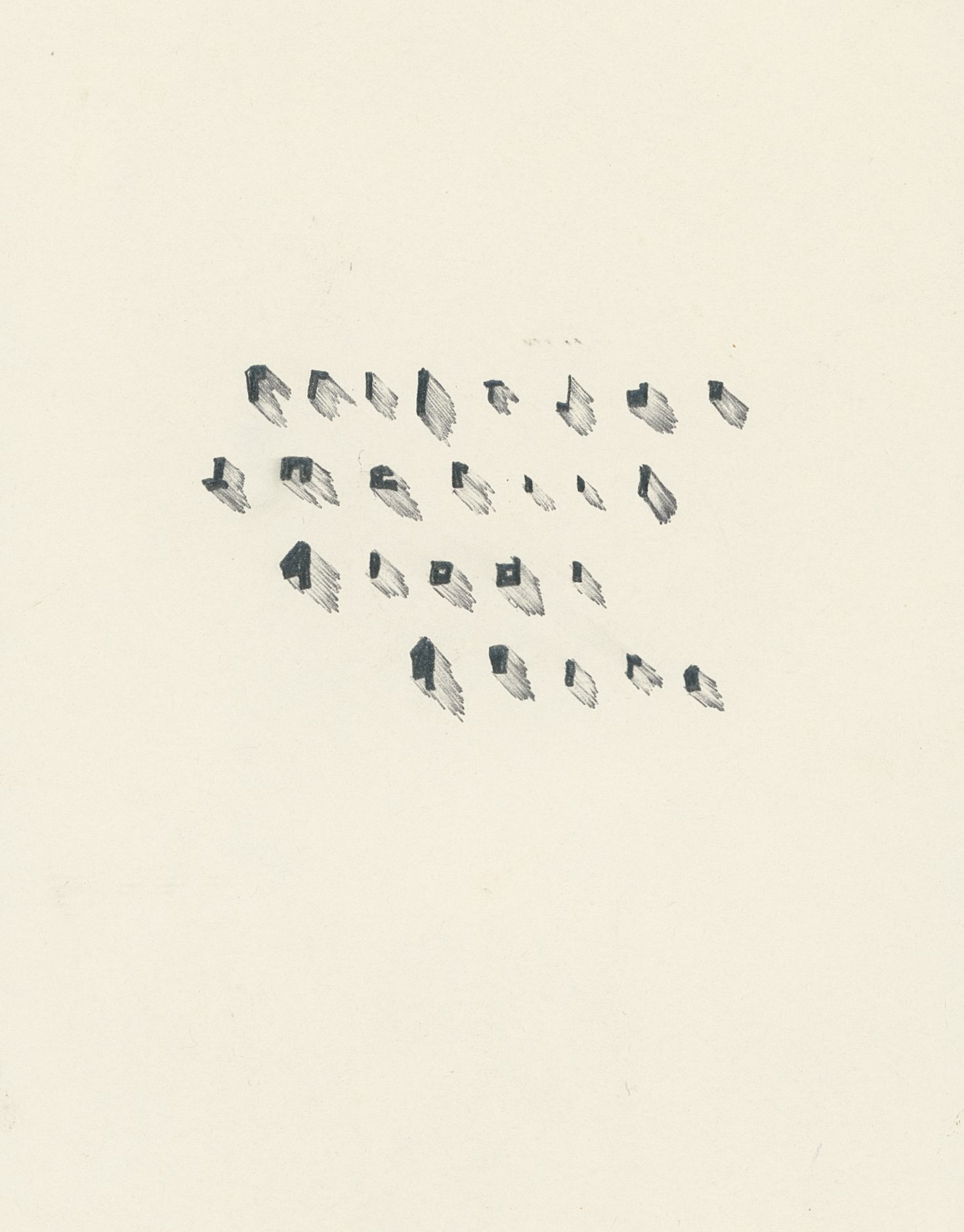Grace Robertson from Ruskin School of Art, University of Oxford kicked off Platform Graduate Award 2019 with her accomplished exhibition, Red in, blank, Blue out, which took place at Modern Art Oxford from 5–15 September. In her new piece for our blog, Grace reveals how she went about transforming Modern Art Oxford’s project space by ‘splitting the room in two’.
Accumulation, in different ways, forms the foundations of my approach to making work. Through collection, things are abstracted from their day-to-day function, reorganised into a system in relation to the self; a self-contained totality through which we navigate our own place in the world. My collection takes the form of objects and drawings, which I show in places, or write about, to endlessly rearticulate their narrative sequences. Like in music or language, the movement of these units can be improvised, staged, repeated or translated into different arrangements. Through opening my collection within the site-specific nuances of given and constructed space, these things are recontextualised into a new system set apart from the self. Here they enter back into the world’s network within a new cycle that forms the conditions of its own becoming. Inside this framework, interior meets exterior within a model that is contained in the world but also entirely detached from it, both true and false, sure of itself, yet entirely fallible. Throughout my degree these ideas developed to become a strategy for approaching space in this way, as a transformative site.

When faced with the challenge of working with Modern Art Oxford’s project space, I was instantly motivated by the wall that once split the room in two. I considered how things either side of it could, or couldn’t, be able to communicate through it as a surface, or barrier. With a line drawn down the middle, this form reflected reoccurring imagery in my drawings, architectural barriers and surfaces that impede or facilitate movement of the line. The form of the structures was then similarly taken from architectural experience, emphasising things outside immediate perception, behind the wall, under the ground, through a bird’s eye perspective. This enhances the relation to scale and the bodies middling position in the navigation of its space.

Here, fragments fuse and become a new whole, small narratives start to play out between things in relation to their new architecture. This models the way we experience the world under construction; the concrete limits of the physical world are constantly reconfigured, memories are reformed, creating new versions of the past continually with every new second that goes by. These fragments imbed themselves within the other, like a nested hierarchy, referencing the same repetition of form at different levels. Ultimately this makes one whole (or in the case of this work, two) that the closer you look unfold the same paradigm within different scales, under the same gravity.
Therefore, it’s important to me to maintain the same concern for the systems that revolve beyond me as well as under my control, hence why it’s essential that I use recycled material to form my structures. In this way, once the showing is over, I feed my work back into a system of material, continuously forming into new things. The body is then positioned between its own cycle of objects, and the cycles that it is itself contained within.
I found through working collaboratively that I enjoy leaving something to chance, to another person, or an agent apart from myself. This allowed the work to engage in a system of becoming that was wrapped up within its own mechanism, creating the conditions for its own movement. For example, in my degree show I hinged the cycle of drawings coming in and out of boxes on the movement of a fly. The rules surrounding the site become more improvised, left to chance; there’s a script, in a way, but the objects and drawings always deviate, and the systems often fail. It reflects the theatre of a blank canvas, the potential of a dark stage, the need for time, to allow things to unfold at their own pace. Once the showing is over, I am conscious that the cycle never ceases. The drawing and objects return to my collection to rest in the state of becoming, instead of being forced into a state of arrival.
Written by Grace Robertson, Ruskin School of Art, University of Oxford.

About Platform Graduate Award
Celebrating new artistic talent from across the South East, Platform Graduate Award 2019 is a series of three solo exhibitions by selected BFA graduates from Oxford Brookes University, University of Reading and The Ruskin School of Art, University of Oxford. The initiative supports emerging artistic talent to further their practice, and awards one outstanding artist a £2,500 bursary and mentoring from a professional artist. Read more here.
